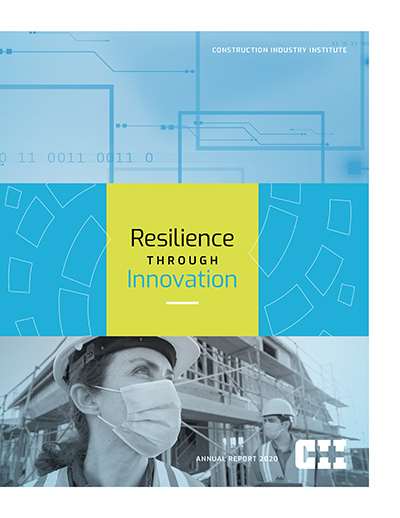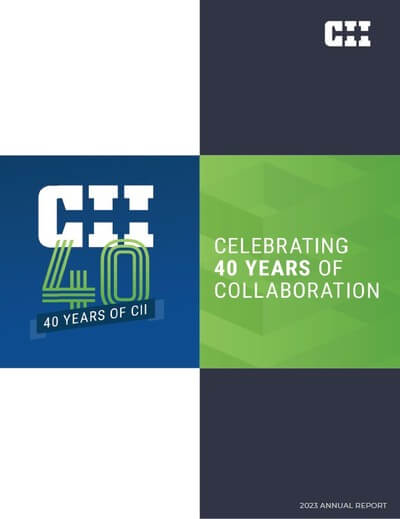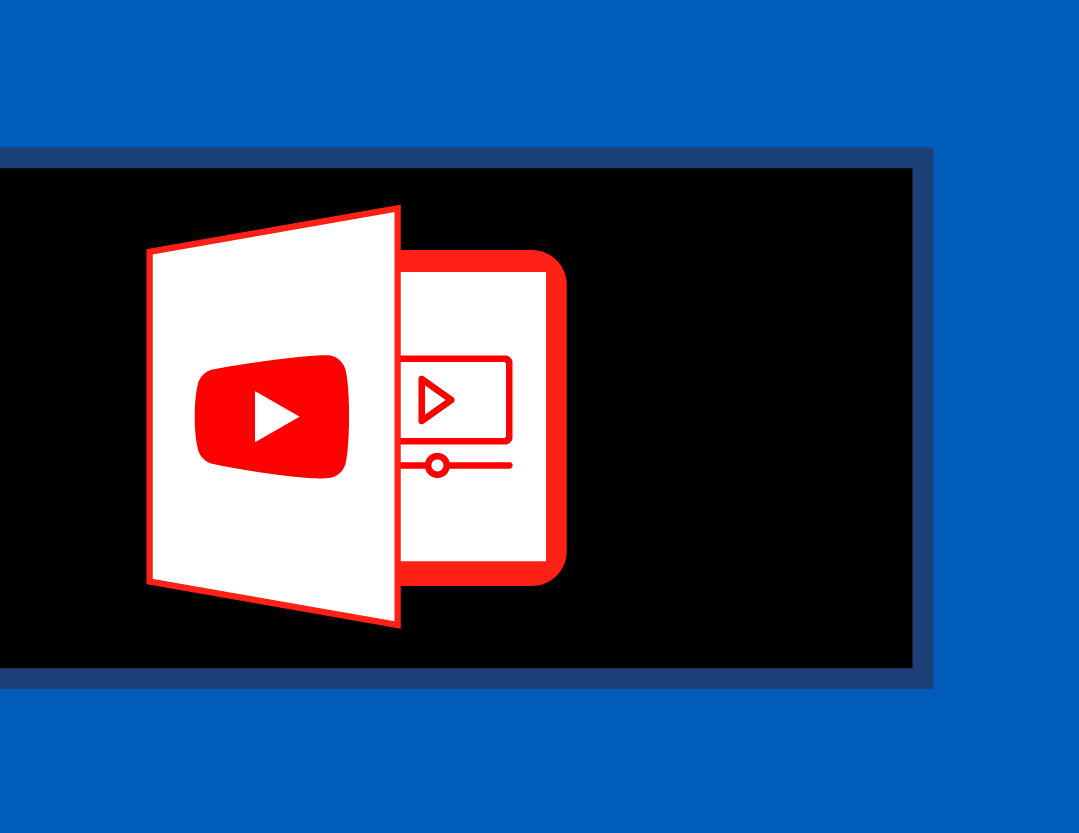
CII 2020 Annual Report
Dear CII Members:
Today (March 13, 2021) marks the one year anniversary of working from home for our resilient CII staff. I’m sure you will agree that the past year has been unlike any other. The pandemic’s toll on people, their families, and our engineering and construction industry has been extensive; certainly beyond anything I could have imagined a year ago. Many mourn the loss of friends, colleagues, and even family members and if you have been affected in this way, please accept my most heartfelt condolences.
THE WORLD HAS FOREVER CHANGED. And yet, through it all, we have also witnessed the compassion, care, dedication and humanity of people helping each other — often amongst people who have never met. Personally, this aspect of the past year has brought me comfort; that the tragedy and turbulence we have experienced will eventually cease and that the hope for better and brighter days is both real and near.
The pages that follow this letter provide an overview of what CII accomplished in 2020. While our achievements pale in comparison to the work and sacrifices of our healthcare workers and first responders and others, I am proud that the Institute did everything that we could to support our members as you worked to create emergency infrastructure and keep the national and global economies moving as much as possible.
Better Together
One year ago, CII did pivot to provide immediate assistance and information to everyone in the industry, without asking if they were a member or not, without exception. We did this by convening Zoom and MS Teams meetings with a variety of companies to consider best practices of keeping employees safe and shutting down (and, eventually) restarting projects. CII also planned and facilitated more than two dozen webinars last year, again focused on pandemic response, with more than 500 people registering (on average) for each session (these webinars were recorded and are still available on CII’s website: https://www.construction-institute.org/resources/knowledgebase/cii-webinar-videos).
Whether you shared your knowledge in a webinar, participated on a research team or committee, or helped in any other way, I am grateful for the role that you played in helping your peers and competitors navigate the difficulties and stress inherent to engineering and construction in 2020. I’m also thankful for the tremendous leadership of CII’s Executive Committee and our Chairs Joe Dorsch (LyondellBasell), Doug Omichinski (Bechtel Group) and Steve Cabano (Pathfinder) who lent extensive time and their expertise to help our capital projects industry in its time of crisis.
For me, COVID-19 helped make one aspect of our industry crystal clear: we are better together. Moreover, we are at our best when we help each other. In that first week working from home, following a meeting we convened with several companies trying to decide if they should shut down their projects, one of CII’s owner-members remarked to me “I never realized just how isolated we have become” and “how much we really need and value the perspective of these other companies.” This wasn’t an indictment of anything done intentionally, but rather, an observation of how the busyness of life and work had contributed to their company’s isolation and how that needed to change.
We know firsthand at CII that the value we bring by working with a diverse group of people increases exponentially as more organizations and their employees choose to participate. In fact, this is the logic of the work we are doing to explore an operational joint venture with the Construction Users Roundtable (CURT) and with other partners in a global industry Alliance. I envision that working together, CII and our peer groups will create even more value for you and the work you do to improve the built environment (make sure to stay tuned to CII in 2021 as we work to launch this momentous opportunity for capital projects).
Reinventing Our Industry
But 2020 also reaffirmed that change is coming to the engineering and construction industry, and now in an increasingly accelerated fashion. Due to the pandemic and variable market dynamics, many companies have already made substantial organizational changes to prepare themselves for a different future. Despite these changes, what we do know is that improvement still depends on people, process, technology, and the right business model. To that end, CII held our largest-ever Executive Leadership Program (XLP) in January 2020 to prepare the industry’s next generation of leaders (the next offering of the XLP will be May 4-13, 2021). We also completed the work of our research teams on schedule and reported their findings to improve the industry’s work processes and technologies in summits and webinars because we were unable to hold our Annual Conference in August in Denver. Finally, we made substantial progress to reinvent our industry’s business ecosystem through the Operating System 2.0 (OS2) Industrial Affiliates Program (for more information see: https://www.os2.construction-institute.org/). All of this work in 2020 paves the way for what’s next for CII.
Leading the Way
In last year’s CII Annual Report (and before the pandemic appeared in the United States) I wrote that “the size and scale of the financial and managerial challenges that this industry will confront in the next few years compels us to do more.” At the time, I had no idea what the magnitude of these challenges would be given the year we’ve just experienced. So while the future remains uncertain, your Institute will move ahead in 2021 by consolidating the efforts of our committees, communities and research teams around four primary initiatives:
1. Capital Efficiency – More than being predictable on cost and schedule, CII is driving for measurable gains in getting more benefits and value from every capital dollar spent on an engineering and construction project. An initial effort in our Downstream and Chemicals Sector Committee is showing that better returns in investment over an asset’s lifecycle are possible. OS2 research has shown that 41% of capital is typically spent on (value subtracting) transactional costs. We intend to correct these losses through business model innovations and better work processes. We will benchmark the gains in capital efficiency in CII’s new, landmark Data Warehouse based at the University’s Texas Advanced Computing Center (TACC).
2. Advanced Work Packaging (AWP) – For the past decade, CII has been developing and championing AWP as the most modern production system in engineering and construction. Building on early advances made by the Construction Owners Association of Alberta (COAA) in the field through workface planning (WFP), AWP now includes all phases of a project from initial planning through to commissioning and operations. Our goal in this initiative is to now expand AWP adoption on projects while researching how to leverage machine learning and other artificial intelligence methods to promote agility in progressing and completing work packages.
3. CII Resource Selection Concierge – The Institute has completed more than 200 research efforts in the past 38 years, the majority resulting in a heuristic, checklist or work process tool. Following the recommendations of CII’s Strategic Planning Committee (SPC), our task is to examine more than 100 “tools” to understand their relevancy in a digital world and map their gaps and overlaps relative to each other. We believe that the role of the Concierge will be to assist companies’ diagnoses of issues on engineering and construction projects and
(eventually) recommend bundled toolsets and resources capable of providing predictability and capital-efficient performance outcomes.
4. Environmental, Social, and Governance (ESG) Criteria – CII intends to explore how capital projects and the organizations that plan and execute them can best consider and respond to emergent ESG criteria that are now being used to screen potential investments. The Institute may hold workshops to consider how a company can be a better steward of nature and manage relationships with employees, customers, suppliers and the communities in which it operates. Additionally, we will learn how our members can be even better corporate citizens through their project work. CII might also examine the emerging technologies in each of our five sectors relative to ESG criteria and how these concepts could be deployed holistically throughout the industry.
Building A Better World
2020 was a landmark year in so many ways. Although it will (most likely) be remembered for the tragic and difficult circumstances that accompanied the pandemic, it was also a catalyst that made us treasure the blessings we have in life, in each other, and in our work in engineering and construction. While I’m pleased with CII’s performance and response to our members last year, I’m most proud of how our staff, member-volunteers and researchers worked together to achieve some great outcomes for people and projects that were struggling. I think 2020 made us pause in our busyness which characterized prior years. It helped us realize that the world will be different – and hopefully much better – in 2021 and beyond. I’m excited about the upcoming joint venture and Alliance as well as the initiatives we are starting. But, mostly, I’m deeply appreciative for your involvement in CII and the resolve we have, together, to improve this industry!
Sincerely,
Stephen P. Mulva, Ph.D.
Director


